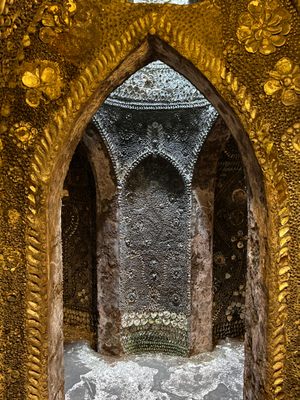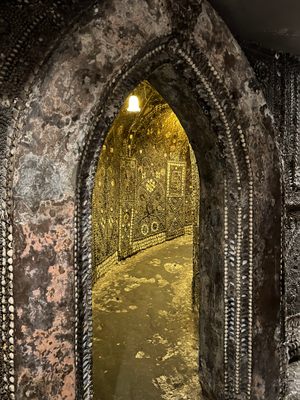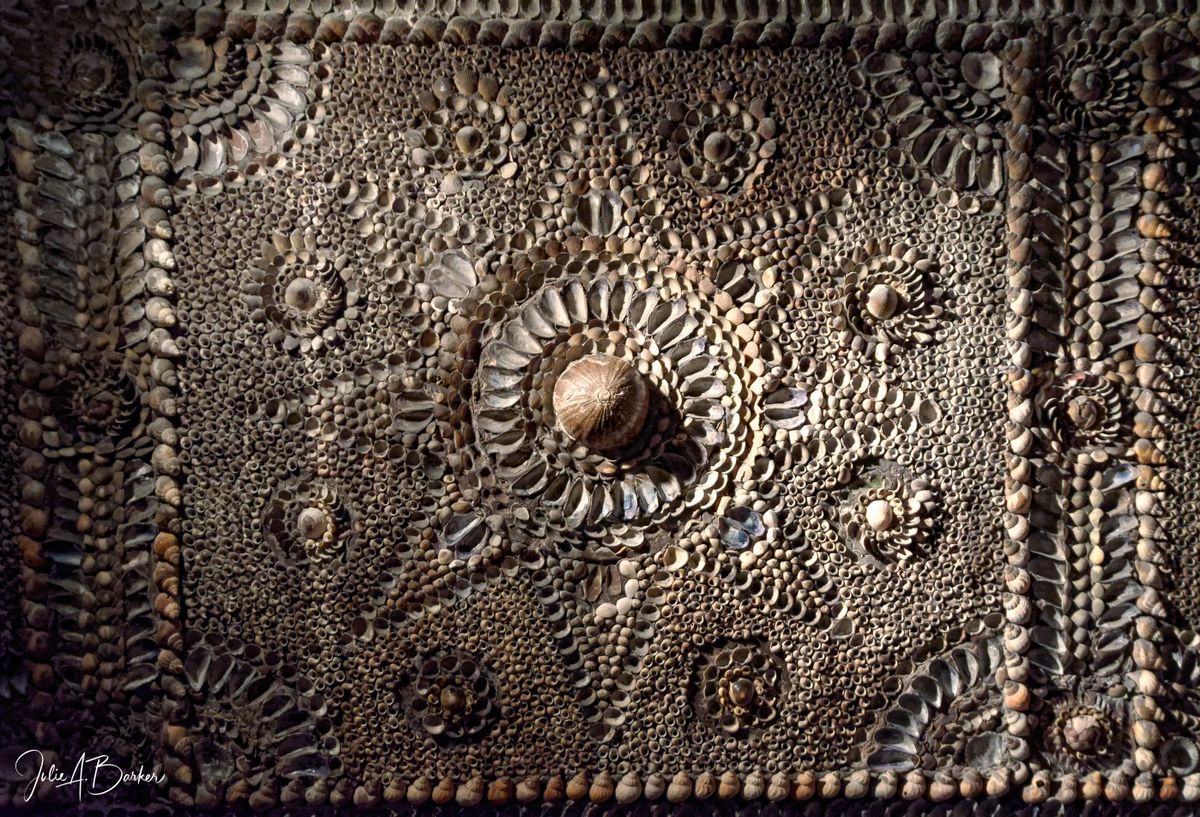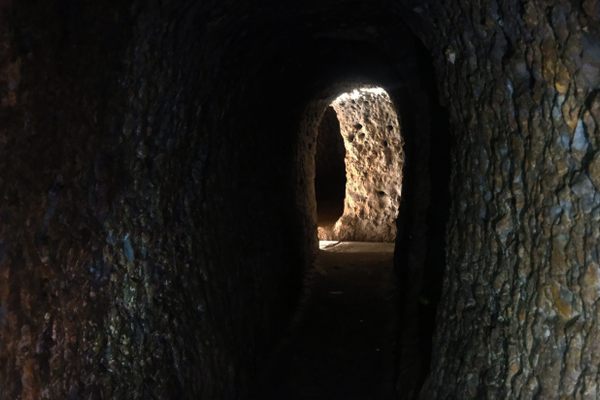About
Located in Margate, Kent, The Shell Grotto’s walls and roof are covered in mosaics made entirely of seashells, totaling about 2,000 square feet of mosaic, or 4.6 million shells.
In 1835, James Newlove was digging a duck pond when his shovel broke through the ground into some kind of underground opening. Lowering his son into the cave, he quickly realized that this was more than just a natural underground cavern. (Reports on the discovery vary, and some suggest that Newlove and his children were aware of the grotto for some time before announcing its existence to the world.)
Decorated with thousands of local shells, the designs are reminiscent of Indian and Egyptian designs. The mosaic panels are quite abstract but some appear to represent animals such as a crocodile, owl, or turtle and another is said to look like a skeleton.
The grotto was opened to the public in 1837 and quickly became a local tourist attraction. Unfortunately the gas lamps used to light the cave in Victorian times have rendered radiocarbon dating almost entirely useless in dating the age of the cave. Other methods have been used in an attempt to date the cave but so far they have proved fruitless, and an investigation into the mortar used to affix the shells to the wall was only able to conclude that it was "fish based."
Because of this lack of a fixed date of creation and because the designs look vaguely Eastern, speculations over who made this cave have ranged wildly from Phoenicians over Romans, Templars to 18th and 19th century mystics and magicians. Most likely it was created in the 1700s by one of the many Eastern-influenced secret societies of English gentlemen.
The grotto is a small place, and easy to miss, in a neighbourhood that obviously has known better times. At the front of the small entrance building which there is a souvenir shop and cafe, and a museum room telling the history of the grotto leads to a narrow stairway, and a chalk passage, with a few niches decorated in shells.
Once through the new entrance a narrow S-shaped passageway leads to a chamber with a central column, and this is where one can grasp the charm of this man-made cavern. The walls and ceiling have been covered in literally thousands of shells, in intricate patterns which look like trees, flowers, men, and more.
At the end, there is a shaft upwards, letting in the sunlight, and said to function as a solar clock/calendar. A further S-shaped passageway leads to a rectangular room, which had its vaulted ceiling and part of its wall destroyed in the World Wars.
While some have suggested it to be a hoax - even though there is no evidence of excavations at the time - there are some archaeological reports remarking on the similarities with the construction of early tin mines in the region.
Obscura Day location: April 9, 2011.
Related Tags
Community Contributors
Added By
Edited By
Published
June 23, 2010

































